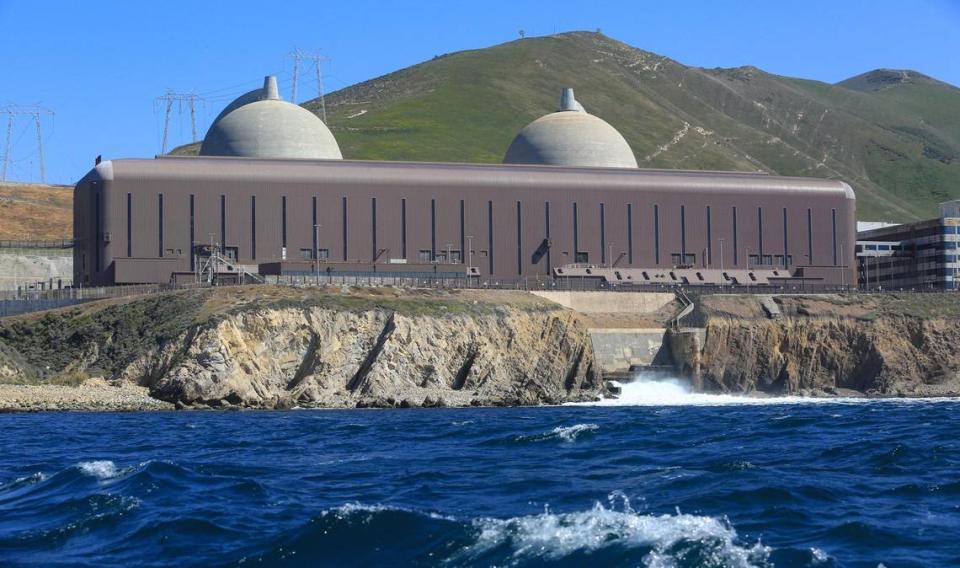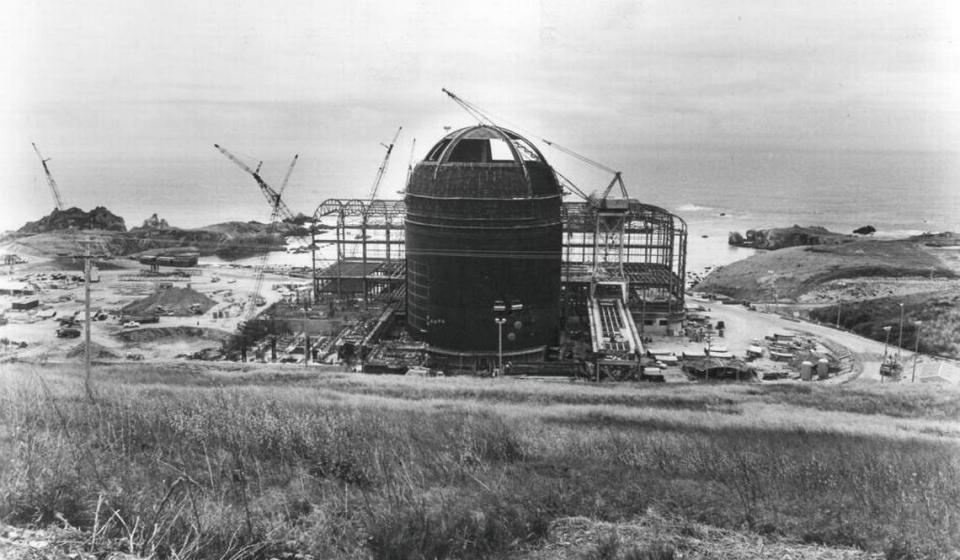New lawsuits question safety of Diablo Canyon nuclear power plant. Here’s what they say
Two anti-nuclear groups have filed a pair of lawsuits questioning the safety of the Diablo Canyon nuclear power plant — though PG&E maintains the plant is operating safely and according to regulations.
In the first lawsuit, Friends of the Earth and Mothers for Peace claimed PG&E has put off inspecting a capsule in one of its nuclear reactors for nearly 17 years — with the permission of the Nuclear Regulatory Commission. The two groups are suing the NRC for allowing PG&E to delay that inspection.
Next, Friends of the Earth sued the U.S. Department of Energy on April 2 for awarding $1.1 billion in federal funding to PG&E to keep operating the nuclear power plant.
The group argued the department did not conduct an appropriate environmental review of the plant before awarding the money.
Meanwhile a PG&E spokesperson said in both instances the nuclear power plant is operating safely and within all required regulations.
Here’s a look at the two lawsuits.

NRC shouldn’t take ‘shortcuts’ in allowing PG&E to put off inspection, lawsuit claims
In the first lawsuit, Friends of the Earth and Mothers for Peace said PG&E delayed a safety test on a pressure vessel for the plant’s Unit 1 reactor numerous times in the past 17 years.
The lawsuit was filed in the U.S. Court of Appeals for the Ninth Circuit on March 20.
The pressure vessel holds the reactor’s radioactive core and the water that cools it.
According to PG&E’s updated operating license for Unit 1, the company is supposed to periodically remove and test capsules from the reactor — which monitor the reactor for embrittlement.
Embrittlement happens when radiation from operating the nuclear reactor causes its materials to become more likely to break.
Because the capsules are closer to the fuel than the reactor is, and they are made of materials already most susceptible to embrittlement, they deteriorate more quickly than the reactor itself, according to PG&E Director of Strategic Initiatives Philippe Soenen.
Inspection of these can help indicate how much time it will take for the reactor to reach unsafe levels of embrittlement, Soenen said.
PG&E periodically removes the capsules for testing, he said.
PG&E was originally scheduled to remove and test Unit 1’s Capsule B by 2007, according to the lawsuit.
Instead, the NRC allowed PG&E to put off that inspection four times between 2008 and 2023 without a public hearing, the lawsuit claimed. Most recently the body re-scheduled the procedure for 2025, the lawsuit said.
PG&E originally attempted to retrieve Capsule B in October 2023, but was unsuccessful, spokesperson Suzanne Hosn said.
The reactor core barrel, which weighs 172 tons, blocked PG&E’s access to Capsule B in 2023, according to Hosn.
Additionally, “the access plug to the capsule did not operate as intended and the tool would not engage in that location,” she said.
The commission will allow PG&E two attempts to remove and test the capsule, Hosn said. PG&E will try again during the next Unit 1 refueling outage in 2025, she said.
PG&E plans to remove and reinstall the reactor core barrel as part of routine maintenance during the 2025 refueling outage, which will make it easier to retrieve Capsule B, according to Hosn.
PG&E meanwhile conducts ultrasonic inspections of the nuclear reactors to test for embrittlement, which have shown “no reportable indications of cracking,” Hosn said.
Friends of the Earth and Mothers for Peace argued that delaying the inspection is a safety hazard, and they claimed that the NRC was not holding PG&E to a high enough safety standard.
“The Nuclear Regulatory Commission cannot, and should not, take any shortcuts if it is going to allow Diablo Canyon to continue operating beyond its scheduled retirement,” Friends of the Earth legal director Hallie Templeton said in a news release.
PG&E, however, said Unit 1 is up to code and operating safely, even with the new inspection schedule.
“Both Diablo Canyon Power Plant reactor pressure vessels have always met all regulatory reactor vessel integrity safety requirements and continue to operate safely,” Hosn said in a statement. “We are in full compliance with regulatory standards and follow industry guidance regarding reactor vessel safety.”
The NRC declined to comment on the lawsuit.
The NRC is expected to file a response to the complaint with the U.S. Court of Appeals sometime this summer, according to Templeton.
After that, Templeton expected the court to set a date for the first hearing in the case.

Anti-nuclear group sues over $1.1 billion award
Meanwhile, Friends of the Earth sued the U.S. Department of Energy for awarding PG&E up to $1.1 billion to continue operating the nuclear power plant.
The funding was awarded through the U.S. Civil Nuclear Credit Program, which was created by the Bipartisan Infrastructure Law to fund nuclear reactors slated to close for economic reasons.
The U.S. Department of Energy finalized the funding plan in January, according to a news release from the agency.
PG&E will receive the funding in installments to support the power plant’s operating costs from 2023 to 2026, the agency said. The amount of each payment will be decided by the actual costs of operating the plant for each time period.
PG&E is scheduled to get its first payment in 2025 based on the cost of operating the plant in 2023 and 2024, the release said.
According to Friends of the Earth, the U.S. Department of Energy’s environmental impact review that accompanied the grant included outdated analysis from the Nuclear Regulatory Commission — which the group said violates the National Environmental Policy Act.
“The Department of Energy should have known better than to shirk National Environmental Policy Act review before handing out a billion taxpayer dollars to a dangerously outdated nuclear power plant,” Templeton said in a news release.
Templeton said the analysis, which looked at the environmental impact of continuing to operate the plant, was completed “almost a decade before Diablo Canyon was even up and running.”
“When it comes to extending the life of this risky nuclear facility, we will keep watching closely to ensure that the Nuclear Regulatory Commission and the Department of Energy fulfill all federal mandates,” she said.
PG&E, however, asserted that the Department of Energy followed federal policy throughout the process.
“The environmental impacts of operation at Diablo Canyon are well understood and have been documented extensively over the course of the plant’s operation,” Hosn said in a statement. “Because an award under the Department of Energy’s Civil Nuclear Credit Program does not change the existing operating configuration of Diablo Canyon or result in significant new circumstances or information relevant to environmental concerns, the Department of Energy properly relied on prior analyses to support its decision.”
Within 60 days of the lawsuit being filed, the U.S. Department of Energy was expected to file a response to Friends of the Earth’s complaint. Then, the court will schedule a hearing for the case, according to Templeton.

